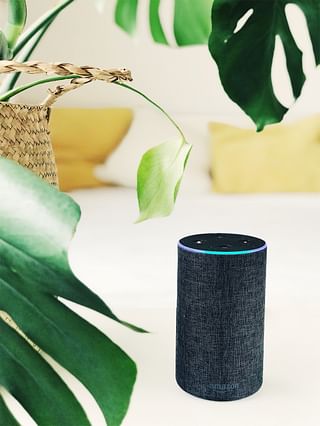
Smart Home Voice Control: Simplifying Your Home Automation with Voice Assistants
As home automation technology continues to evolve, voice control has emerged as a powerful tool for simplifying and streamlining your smart home experience. With voice assistants like Amazon Alexa, Google Assistant, and Apple Siri, you can control your smart devices using nothing but your voice. In this post, we'll explore how to integrate voice control into your home automation setup, create personalized automation routines, and get the most out of your smart home devices.
Why use voice control?
Voice control allows you to operate your smart home devices without needing to physically interact with them. Whether you're cooking in the kitchen or relaxing on the couch, you can simply speak a command to control your lights, thermostat, security system, and other smart devices. This makes your smart home more convenient and accessible, allowing you to enjoy the benefits of home automation without having to remember which app to open or which button to press.
Integrating voice assistants into your smart home setup
The first step to using voice control in your smart home is to choose a compatible voice assistant. The three most popular options are Amazon Alexa, Google Assistant, and Apple Siri. Each assistant has its own strengths and weaknesses, so it's important to choose the one that best fits your needs.
Once you've selected your voice assistant, the next step is to integrate it with your smart home devices. Most smart home devices are compatible with multiple voice assistants, so you can choose the one that works best for you. To connect your devices with your voice assistant, you'll need to follow the manufacturer's instructions and enable the skill or service for your specific device.
Setting up voice commands
Once your voice assistant is linked to your smart home devices, you can start setting up voice commands. Voice commands are simple phrases that you can speak to your voice assistant to control your smart devices. For example, saying "turn off the lights" could trigger your voice assistant to turn off all the smart lights in your home.
To set up voice commands, you'll need to open the settings for your voice assistant and create a new routine or command. You can usually choose a trigger phrase, such as "Hey, Google" or "Alexa, turn on the TV," and then assign specific actions to that command. You can also customize your voice commands by adding conditions like time of day or device status.
Creating personalized automation routines
One of the most powerful features of voice assistants is the ability to create personalized automation routines. Automation routines allow you to schedule tasks or trigger actions based on specific conditions. For example, you could create a routine to turn off all the lights at 10 PM every night, or trigger your thermostat to lower the temperature when you say "movie time."
To create a routine, you'll need to open the settings for your voice assistant and choose the option to create a new routine. You can then add specific conditions, actions, and triggers to your routine. Some popular automation routines include setting the mood for a party, turning on the lights when you arrive home, and setting up a bedtime routine that turns off all the lights and lowers the temperature.
Getting the most out of your smart home devices
Voice control is just one way to use your smart home devices to make your life easier and more convenient. There are many other ways to optimize your smart home setup, from using smart sensors to automate your lighting to setting up security cameras to monitor your home when you're away.
Ultimately, the key to getting the most out of your smart home devices is to experiment and find what works best for you. Try different voice commands, create personalized automation routines, and explore new ways to use your smart devices to simplify your daily routine. With a little experimentation and creativity, you can create a truly personalized and efficient smart home experience.
Posted on: Apr 30, 2023